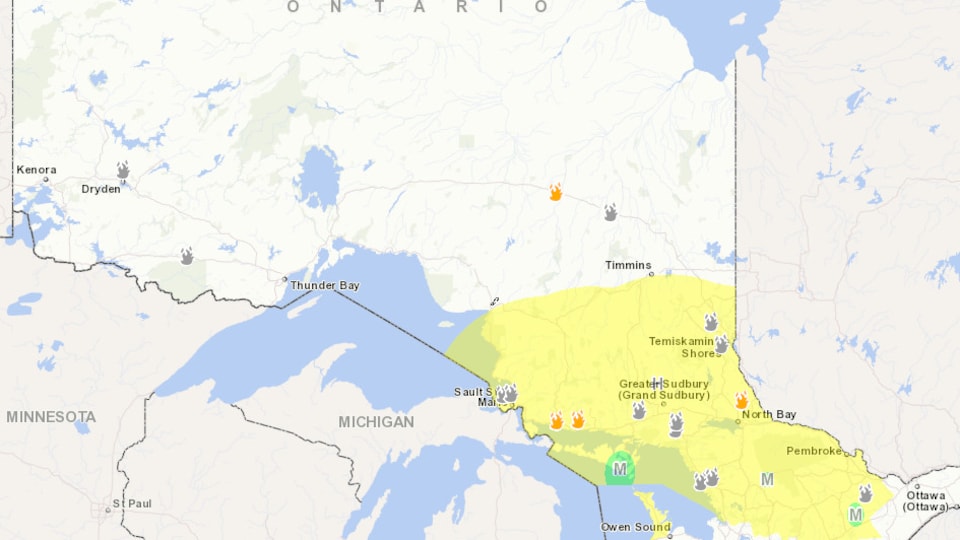Province provides base funding of $100M at the start of each year to protect people, property and natural resources from fires
explains Evan Lizotte, fire information officer in Northeastern Ontario.
He specifies that this amount allows to support the activities of the fire wardens until the real costs can be better estimated, according to the number and the intensity of the fires.
Costs include the salaries of wildland firefighters and administrative staff, as well as backup contractors and out-of-province fire wardens.
The forest fire season runs from April 1 to October 31 in Ontario.
In 2021 in the province, a record area of forest was engulfed in flames, forcing several evacuations, mainly due to smoke.
Smoke from blazes in northwestern Ontario last year has reduced air quality in several regions further east, including in Quebec, thousands of kilometers from the fires.
While it is difficult to predict how the 2022 season will unfold, it has so far been less active than average.
As of May 9, the Emergency, Aviation and Wildfire Services reported 16 fires, including three that were still active at the time of this writing.
In comparison, there were already a total of 46 fires detected on the same date last year, and the average of the last 10 years is 86 fires for the period from April 1 to May 9.
The largest active fire, Sault-Sainte-Marie 4, covered 3 hectares Monday afternoon.
Since the start of the wildfire season this year, the largest blaze, Pembroke 1, spread to less than 10 hectares before dying out.
Fire danger is high in central and near-northern Ontario.
According to Mr. Lizotte, there is still a lot of snow on the ground in certain northern sectors, more than last spring.
” The longer the snowpack persists in fields and forests, the more it will help reduce burning conditions and moderate the risk of spring fires. »
Northwest communities are also struggling with flooding.
Climate change, greed and forest management
Brian McLaren, an associate professor of forestry at Lakehead University in Thunder Bay, isn’t surprised to see the costs of fighting wildfires rising, amounts he calls heavy burdens.
It’s a trend, if you listen to the news in British Columbia, in California, we’re spending a lot more to fight wildfires than in the past.
Climate change is one reason, causing unforeseen long droughts and higher temperatures.
However, McLaren believes that one of the main factors is the lack of a long-term vision in forest management.
He asserts that the greed
endangers ecosystems, in particular through what calls salvage logging
.
This practice involves harvesting wood from areas that have been affected by fires or other natural disasters. We are quick to say, “Let’s cut now, because we can make money immediately”.
The short-term consequence is that it increases the risk of fire
explains the professor. Debris and trunks are left behind which dry out and cause new fires.
” Research in the western boreal forest shows that leaving forests intact after a natural or human-caused wildfire reduces risk. »
To reduce risk, forests must be allowed to regenerate naturally
adds the professor of forestry. Healthy forests have a great diversity of trees.
Without a major change in forest industry practices in the next few years, McLaren says the situation will only get worse
.
He adds that the younger generations, including his students, must be listened to. They raise this issue, they read the news, they worry about climate change.
The ball is in our court, we can do better
he concludes.
Reference-ici.radio-canada.ca

